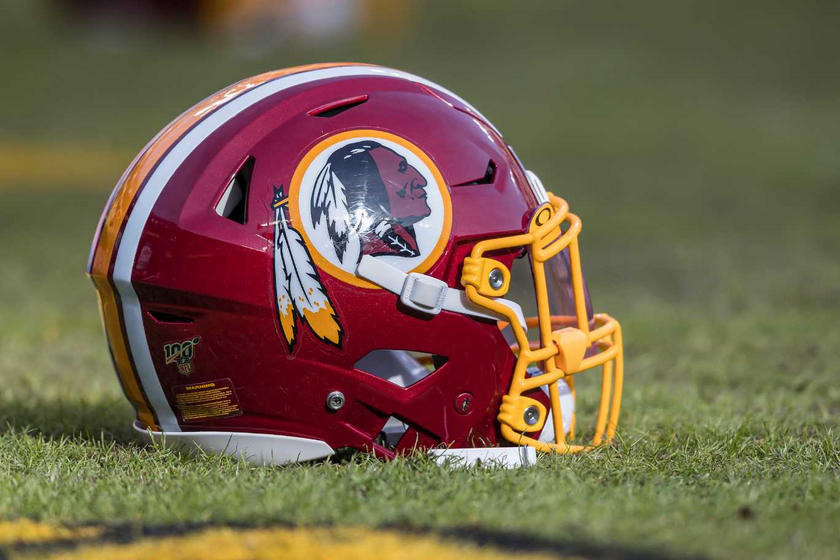
Objective:
To return the Washington NFL team’s name to “Redskins” while maintaining the iconic Indian Head logo, in partnership with Native American communities, and building on the historical significance of the logo, which was created with input from Native American activists, including Walter “Blackie” Wetzel, a former Blackfeet Nation leader and friend of Jim Thorpe. The rebrand will honor the logo's origins while fostering positive partnerships, financial support, and cultural tributes.

1. Respecting the Legacy of the Indian Head Logo
Historical Context: The Indian Head logo was originally designed by Walter "Blackie" Wetzel, a Native American activist and former president of the National Congress of American Indians, as a respectful tribute to a real chief. The logo was meant to celebrate Native American identity and was presented to then owner Jack Kent Cooke and eventually to Robert F. Kennedy (RFK) Stadium to represent the pride of the team and Native communities.
Maintaining the Logo’s Legacy: The logo, which has historical significance, will remain central to the team’s identity. This ensures that the original intent of honoring Native American leaders and their heritage is respected, while the team continues to build on its legacy. Educational content on the logo’s origins will be integrated into the team’s website, social media, and gameday materials to ensure fans understand the importance and respect behind the symbol.
2. Partnership with Native American Tribes and Organizations
Cultural Oversight Committee: Establish a “Cultural Oversight Committee” composed of tribal leaders, historians, and Native American activists who will work with the team to ensure that the logo and the use of the “Redskins” name are respectful and empowering. This committee will ensure the brand reflects positive, culturally appropriate values.
Formal Tributes and Acknowledgments: Similar to the relationship between Florida State University and the Seminole Tribe, the team will enter into formal partnerships with specific tribes, ensuring the name and logo are used with full tribal consent. Tribes, in exchange, will have opportunities to promote cultural heritage during games and events.
3. Financial Contributions and Investment in Native American Communities
Revenue Sharing and Donations: A portion of the team’s profits from merchandise, ticket sales, and media rights using the “Redskins” name and Indian Head logo will be directed to support Native American communities. This could involve funding healthcare, education, and infrastructure improvements on reservations.
Team Foundation for Native American Initiatives: Establish the “Redskins Foundation for Native American Initiatives,” which will support programs in tribal communities. This could include economic development projects, scholarships, healthcare services, and cultural preservation initiatives.
Annual Native American Charity Game: Introduce an annual “Heritage Game” where a portion of ticket sales and all proceeds from a special line of merchandise go directly to Native American causes. The event will include pregame ceremonies featuring tribal leaders and cultural performances.
4. Cultural Tributes and GameDay Honors
Pre-Game Ceremonies: Before each home game, the team will host a ceremonial event, led by Native American leaders, to honor the tribes, elders, and warriors of the past. This could include blessings, traditional music, or cultural performances.
In-Game Recognition: Native American veterans, leaders, and athletes will be recognized throughout the season during games. This ensures that Native American contributions to the country, sports, and the military are highlighted in a positive light.
Team Captains and Symbolic Representation: Similar to Florida State's Osceola, the Washington team could introduce a symbolic figure, such as a tribal elder or representative, to lead the team out onto the field for ceremonial occasions.

5. Educational Initiatives and Public Awareness
Educating the Public: A comprehensive media and educational campaign will inform the public about the origins of the Indian Head logo and its connection to a real chief. By working closely with Native American leaders, the team will create content that highlights the respectful and intentional way the logo was created, including Walter Wetzel’s influence and his relationship with Jim Thorpe.
Heritage Exhibits at the Stadium: Create exhibits in the stadium that explore Native American history, culture, and the significance of the logo. The exhibit could feature items from the original presentation to RFK, Native American artifacts, and tributes to prominent Native American athletes, including Jim Thorpe, who was one of the greatest American athletes of all time.
School and Youth Outreach: Launch outreach programs in local schools that educate young fans about Native American history, culture, and the team's partnership with indigenous communities. The team could host events where Native American leaders visit schools to share their stories, ensuring future generations are aware of the importance of respecting the history behind the team’s name and logo.
6. Merchandising and Brand Representation
Authentic Merchandise Collaboration: Collaborate with Native American artists and designers to create exclusive merchandise, which will feature traditional designs and symbols integrated into the team’s logo and branding. A percentage of sales from this merchandise will go directly to supporting tribal communities.
Culturally-Inspired Uniforms: In addition to the main team uniforms, the Washington NFL team could introduce alternate uniforms or patches that incorporate designs inspired by Native American culture, created in consultation with the Cultural Oversight Committee. These could be worn during special games or events honoring Native American heritage.
7. LongTerm Vision and Sustainability
Sustained Partnerships: Ensure that partnerships with Native American tribes are longterm, not merely symbolic. The team will commit to sustained financial support, continuous engagement with Native leaders, and an evolving relationship that adapts to the needs and desires of tribal communities over time.
Community Engagement: Host regular forums and town hall meetings where Native American leaders and community members can discuss the team's branding and how it can further support indigenous communities. These open discussions will ensure the team's relationship with Native American groups remains transparent, evolving, and beneficial.
Conclusion:
This proposal presents a vision for the Washington NFL team to return to the “Redskins” name while preserving the Indian Head logo, a symbol of pride created by Native American leaders. The plan ensures that the rebranding is deeply respectful, rooted in history, and beneficial to Native American communities through financial contributions, cultural tributes, and educational initiatives. By partnering with Native American tribes and honoring the legacy of figures like Jim Thorpe and Walter Wetzel, the team can create a positive and sustainable relationship that both honors and empowers Native American cultures.












